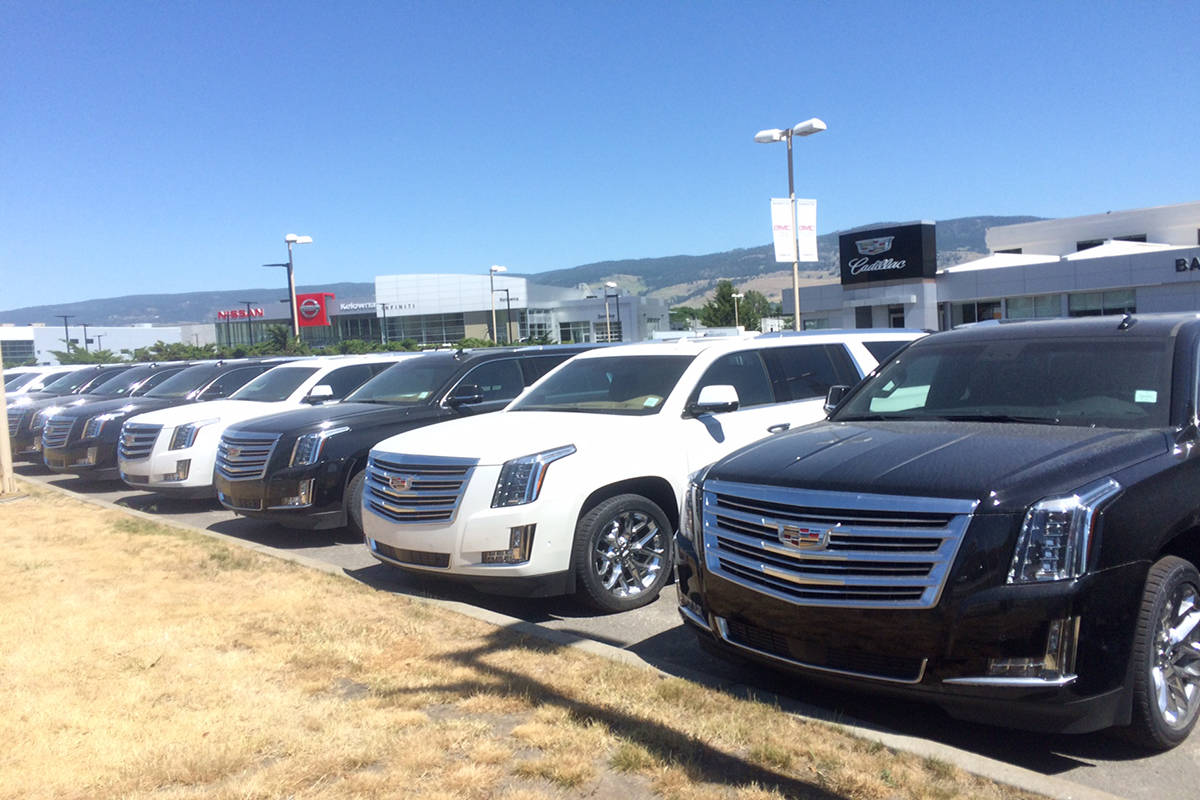Stable product pricing over the last 20 years has helped fuel four consecutive record-setting years for new car sales across Canada, says the chief economist for the Canadian Automobile Dealers Association.
Michael Hatch says the car sales’ industry exceeded 1.7 million vehicles sold in 2016, and is on target to reach the two million level this year.
“On a provincial level, western Canada remains very strong and in particular in B.C., helped by a strong provincial economy, sales are up six per cent over last year, where the national average increase is tracking at about 4.7 per cent,” Hatch said.
Hatch believes there are several explanations for the continuing car sales boom—technological advances, fuel efficiency, engine performance and vehicle engineering quality among them.
But he cites pricing as a key reason, saying the value in real dollars of a new car hasn’t changed that much dating back to 2000.
“Back then, the average price of a new vehicle was in the $24,000 to $26,000 range. Now in 2017, the average price has moved to the $26,000 to $27,000 range. That is a nominal price increase over the last 16 years,” Hatch explained.
“The price of new vehicles has really defied inflationary pressures. In other areas of things people buy, from energy prices to food to clothing, those have increased significantly over time.”
But Hatch is mindful of the cyclical nature of the automobile industry, saying an economic recession hiccup or rise in interest rates could negatively impact new car sales numbers.
“We usually get a recession every decade so we are probably due for one pretty soon, but right now the economy is quite strong in western Canada, and you guys in B.C. are in a good place right now for the short-term ahead,” he said.
He said the digital technology evolution has also impacted the automotive industry just like most other facets of the economy, from how car-buyers do their homework via social media to decide on what car to buy, to car dealers relying on new marketing methods to reach their customers.
“Buying a vehicle is still a significant investment and people are generally not comfortable doing that without seeing the car first-hand, being able to look it over and test drive it. It’s not a transaction most of us would be comfortable carrying out in a purely online environment.”
On the manufacturing side, technology continues to impact the evolution of building new cars. Hatch cited the announcement by Volvo that all its vehicle fleet starting in 2019 will include electric models.
Hatch called that a bold move by the Swedish automaker, but one that reflects a tiny share of the overall sales market.
“Electric cars are about .5 per cent of the new car sales’ market right now, and even if it triples in a year, that is still only 1.5 per cent,” Hatch said.
“At that rate, it will be decades before electric cars become a more important segment of the market. Consider that there are 24 to 25 million cars on the road in Canada today, and the electric vehicle share of that is about 16,000 to 20,000.
“A lot of people assume that conversion to electric cars is going to happen in a few years but the reality is internal combustion engine vehicles will continue to be the dominant vehicles on the road for the next 15 years.”
Contributing to that as well, Hatch added, was the regulatory changes demanded by governments for vehicle fuel efficiency standards and a shortage of electric car battery recharge stations.
“Infrastructure is an issue for servicing electric cars but it’s a bit of a chicken and the egg thing. You need more people buying electric cars to raise the priority for infrastructure enhancements, but you won’t have people buying those cars if the infrastructure isn’t in place.”
